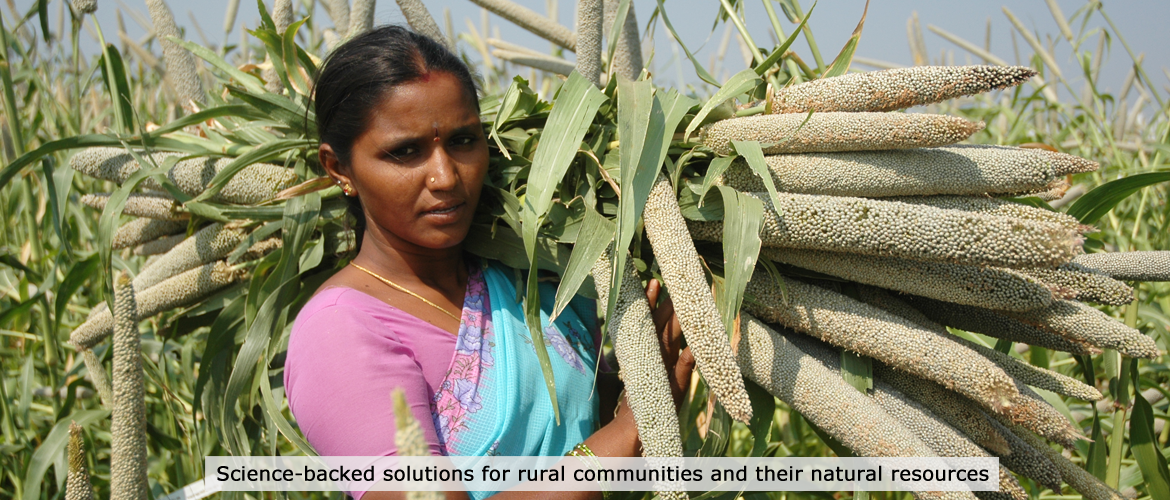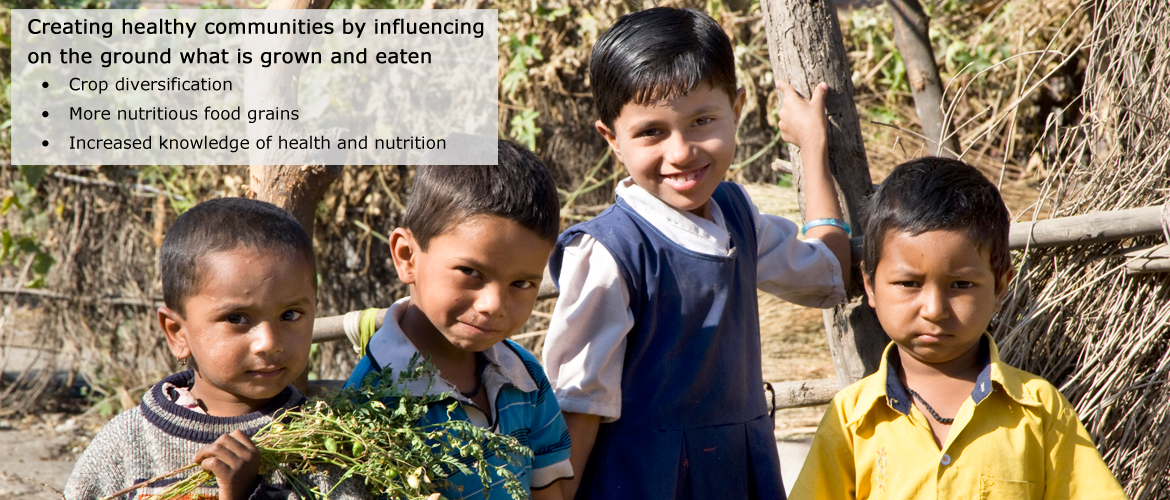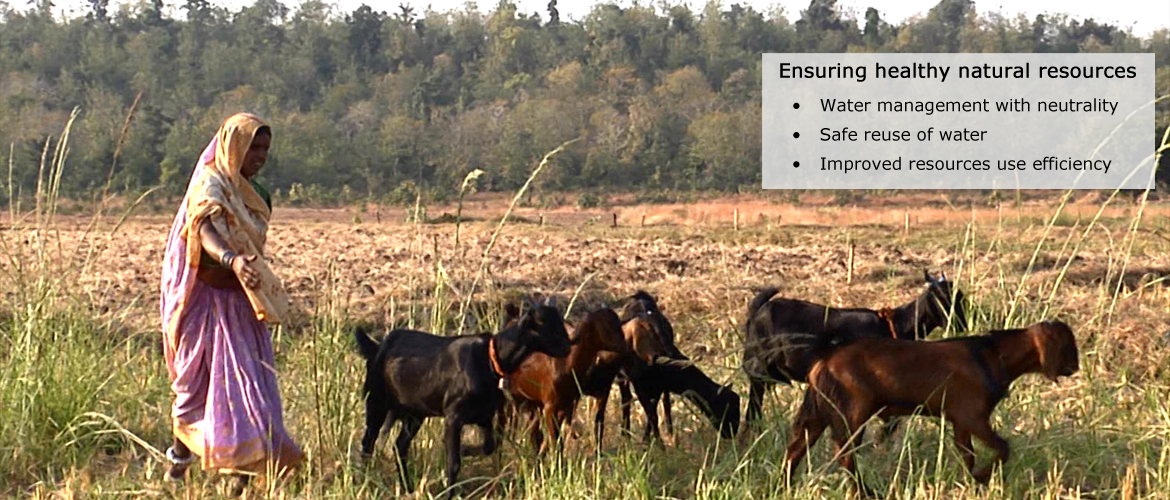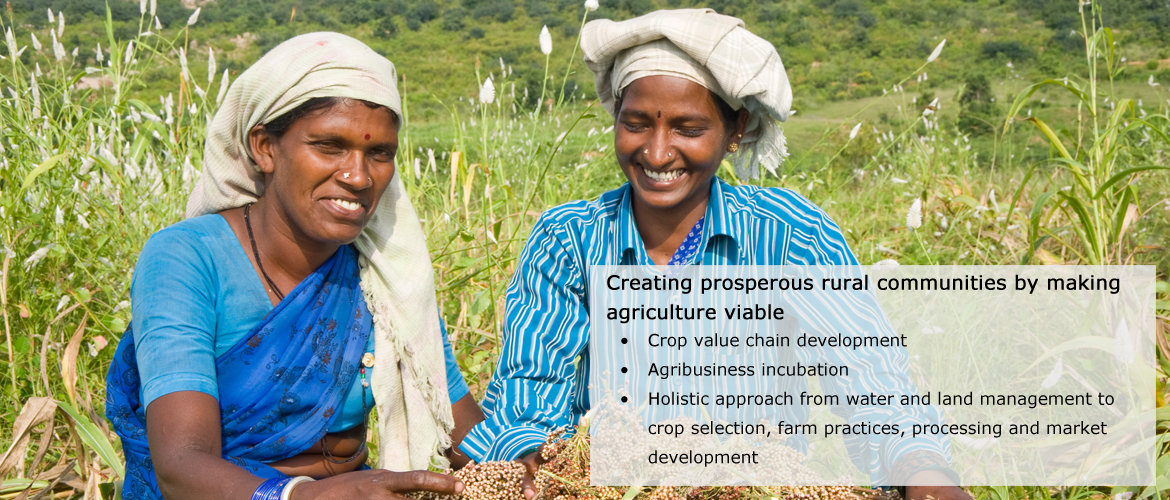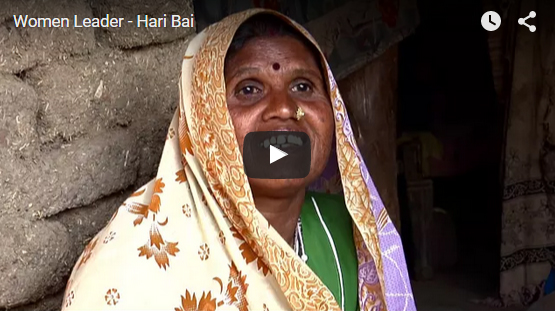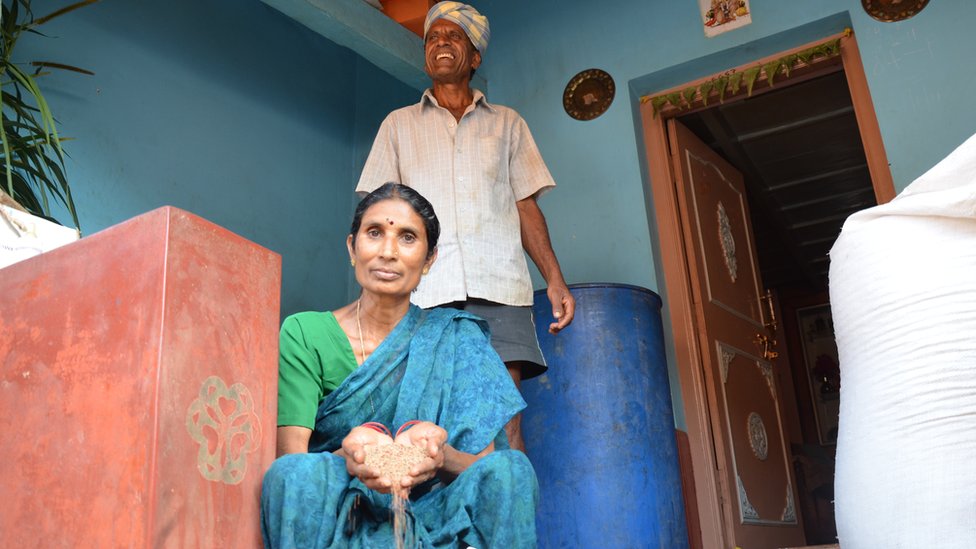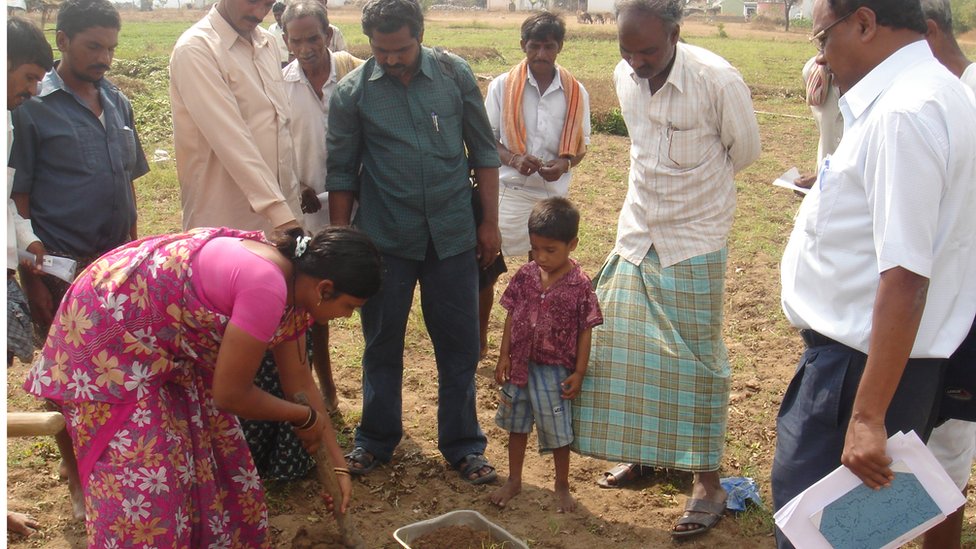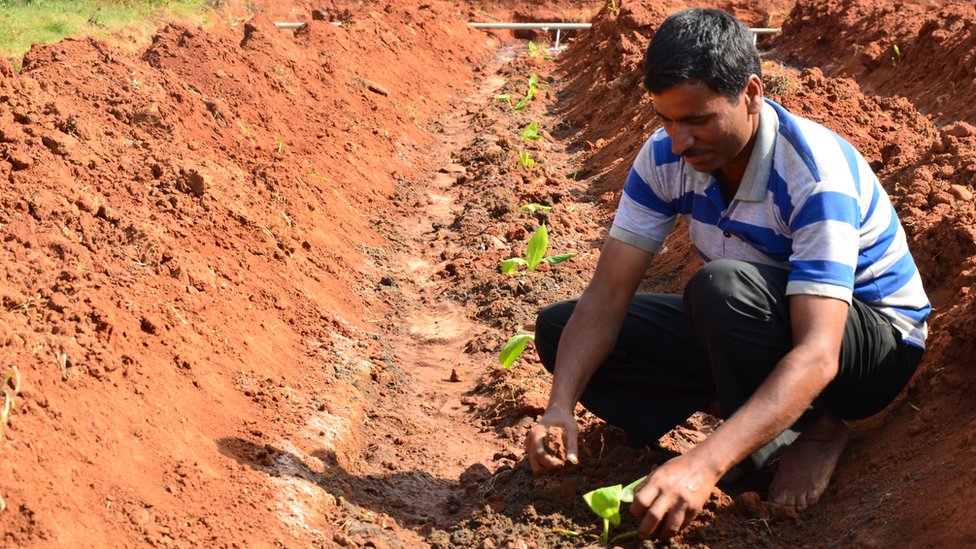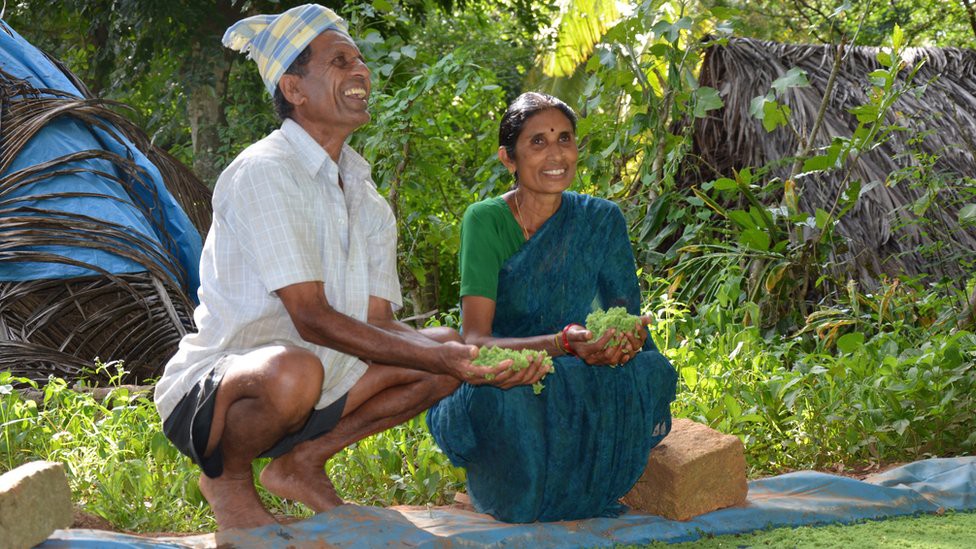Selected Successes
Bhoochetana
The scaling-up/out model was perfected in Bhoochetana in Karnataka, India through a unique partnership with the Government of Karnataka. “Bhoochetana” which means rejuvenation of soils where soil health mapping was used as an entry point for unlocking the potential of rainfed agriculture.
The program covered 4.4 million farmers with area coverage 5 million ha. For individual farmers, the benefit cost ratio of 2 to 14:1 with gross value of increased productivity accrued to be Rs 1872 crores (US$ 353 million) during five years.
– Increased crop yield by 20-66%
– Rise in agriculture growth annually above 5% since 2009
– Benefit cost ratio for the farmers 3-14:1 resulting in average gain of US$500 per ha per season
– Net benefits accrued in 5 years US$ 353 Million
Minister of Roads & Buildings, GoAP lauds RECL-ICRISAT project activities
Farmer-centric Integrated Watershed Management for Improving Rural Livelihoods in Andhra Pradesh & Telangana
Development initiatives implemented at the watershed site in Wanaparthy district, Telangana, India, drew appreciation from the state’s Agriculture Minister Mr S Niranjan Reddy. The minister lauded the holistic and integrated approach that focused on improving livelihoods of women, the self-sustaining model of farm-machinery renting centers and farm-level water conservation measures. He congratulated Rural Electrification Corporation Limited and ICRISAT for developing a model that is replicable, transparent and inclusive in its operations.
In the last two months, the minister visited the project thrice, the recent visit being from December 9 to 10. During his visits, the minister inaugurated farm machinery renting centers and distributed sheep to 73 women beneficiaries in two villages – Mentapally and Peddagudem.
Success stories of OLM-ICRISAT project in Nabarangpur district Odisha State
Sustainable improvement of rural livelihood and restoration of coconut based livelihood through specific science based interventions
Doubling Farmer Income – Andhra Pradesh
Doubling Farmer Income through Grafted Vegetable Seedlings
Tomato Crop Cultivation Techniques
ICRISAT in collaboration with Department of Horticulture, Government of Andhra Pradesh – Technology is making a difference to small farmers lives
OLM-ICRISAT Initiative
Odisha Livelihood Mission-ICRISAT Project
Sustainable Improvement of Rural Livelihoods Through Specific Science Based Interventions
A new OLM-ICRISAT initiative to revive coconut farming and address the problems of coconut farmers in Fani affected Satyabadi block of Puri district, Odisha.
Kurnool PowerGrid-ICRISAT Watershed Impact Video
Improving Rural Livelihoods through Farmer-centric Integrated Watershed Management
PowerGrid-ICRISAT watershed in Kurnool district of Andhra Pradesh is located in Bethamcherla mandal and comprises of 10 villages/hamlets under 4 revenue villages, namely – Pendekal, Marrikunta, Venkatagiri and Repalli (Pendekal revenue village), Muddavaram, Musalayacherue, Veraiahpalli (Muddavaram revenue village), Mandalavaripalli (Emboy revenue village), Bugganipalli, G Tanda (Bugganipalli revenue village).
Microsoft and ICRISAT’s intelligent cloud pilot for agriculture in Andhra Pradesh increase crop yield for farmers.
Microsoft and ICRISAT – Bringing Artificial Intelligence to agriculture to boost crop yield
Following the launch of the pilot in June 2016, that tested a new Sowing Application for farmers combined with a Personalized Village Advisory Dashboard for the Indian state of Andhra Pradesh, the results show a 30% higher average in yield per hectare. The Sowing App was developed to help farmers achieve optimal harvests by advising on the best time to sow depending on weather conditions, soil and other indicators. The pilot was implemented in Devanakonda Mandal in Kurnool district and the Advisory applied only to the groundnut crop.
Janki Bai from Dungaria, a remote village in Madhya Pradesh state, India, turned her barren 10-acre field and neighboring drylands into cultivable land by giving up an acre for a water harvesting pond. The watershed project helped farmers conserve rain water; grow new crops and better crops; and above all transformed their thinking.
The Padarlya-Siyalwada Model Watershed
Seventy-five per cent of Dungaria village was once dryland. Farmers cultivated a single crop during the monsoon season and for the rest of the year they worked as laborers in nearby villages to eke a living.
The watershed initiative ushered in changes that this area has never witnessed before. The availability of water throughout the year through rainwater harvesting ponds has led farmers to grow water-intensive crops like rice during the rainy season and crops like pigeonpea, chickpea, lentils, soyabean, etc., in the postrainy season. Adopting scientific methods of cultivation has helped farmers increase the quality and yield of crops.
Increase in production (tons per hectare*):
- Wheat: From 2.1 to 2.9
- Chickpea: 0.6 tons to 0.9 tons
- Soyabean: 1.5 tons to 1.95 tons
- Cropping intensity increased from 115% to 160%
- Paddy is being grown in this area for the first time
Hari Bai from Siyalwada village in Madhya Pradesh, India, knows how to deal with a fickle monsoon. The holistic approach of the watershed initiative equips her to help herself and others in her community too.
The Padarlya-Siyalwada Model Watershed
Seventy-five per cent of Dungaria village was once dryland. Farmers cultivated a single crop during the monsoon season and for the rest of the year they worked as laborers in nearby villages to eke a living.
The watershed initiative ushered in changes that this area has never witnessed before. The availability of water throughout the year through rainwater harvesting ponds has led farmers to grow water-intensive crops like rice during the rainy season and crops like pigeonpea, chickpea, lentils, soyabean, etc., in the postrainy season. Adopting scientific methods of cultivation has helped farmers increase the quality and yield of crops.
Increase in production (tons per hectare*):
- Wheat: From 2.1 to 2.9
- Chickpea: 0.6 tons to 0.9 tons
- Soyabean: 1.5 tons to 1.95 tons
- Cropping intensity increased from 115% to 160%
- Paddy is being grown in this area for the first time
Our Partners in Sustainable Development




